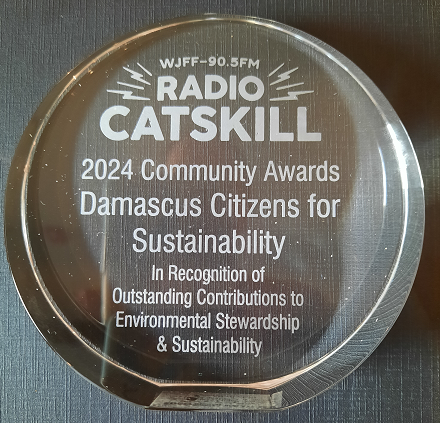Gas Pains
June 1, 2010Houses for Shale
June 5, 2010Washington— The Upper Delaware River, the drinking water source for 17 million people across New York, New Jersey and Pennsylvania is at risk from shale fracking for natural gas, a process that poisons groundwater and creates toxic pollution. This threat landed the Upper Delaware in the number one spot in America’s Most Endangered Rivers: 2010 edition.
“Unless we stop the threat of rampant shale fracking, the drinking water for 17 million people across the Northeast will be threatened by toxic pollution,” said Rebecca Wodder, president of American Rivers. “We can’t let natural gas companies fatten their profits by putting our precious clean water at risk.”
American Rivers called on the Delaware River Basin Commission to ban any shale fracking in the Upper Delaware watershed until a thorough study of impacts is completed and the pollution potential of shale fracking is fully documented and assessed. American Rivers also urged Congress to pass the Fracturing Responsibility and Awareness of Chemicals Act of 2009 and to resist special interest pressures to include federal subsidies of shale fracking for natural gas in upcoming energy legislation.
“The action of American Rivers in highlighting the threat of shale fracking to the Delaware River and the fifteen million plus people who drink its water and use it as a priceless recreational resource is a welcome wakeup call to the governments of New York and Pennsylvania whose casual indifference to the perils of shale fracking to the Delaware River is an act of almost breath-taking irresponsibility,” said Albert Appleton, former Commissioner of the New York City Department of Environmental Protection and the creator of the Catskill Watershed Protection Program for the portions of the Delaware River Basin within the New York City watershed. “It is now up to the Delaware River Basin Commission to aggressively carry out its mandate to protect the waters of the Delaware for if it doesn’t, New York and Pennsylvania will have an economic, social, and public health disaster of unprecedented dimension.”
“This is an intrinsically contaminating process; wherever gas drilling has occurred, environmental destruction has occurred. The total cumulative impact of this industrial activity results in water pollution, air pollution, and soil contamination. Once these precious resources are destroyed, they are gone forever,” said Barbara Arrindell, Executive Director of Damascus Citizens for Sustainability.
The entire Upper Delaware River and its watershed are located over a geological formation known as the Marcellus Shale. In order to access the reserves of natural gas in the shale, multinational energy corporations have acquired drilling rights to large tracts of land in the watershed. Two companies alone, Chesapeake Appalachia and Statoil, have a stated goal of developing 13,500 to 17,000 gas wells in the region in next twenty years.
Energy companies have requested permits to take clean water from the river to mix with over 250 chemicals (some toxic, undisclosed, and proprietary), to make hydraulic fracturing fluid for injection into wells to release the gas. Each well requires between three and five million gallons of water for fracturing. Extracting natural gas from shale results in surface water and groundwater pollution as well as soil contamination and erosion.
In 1978, Congress designated roughly 73 miles of the Upper Delaware River between Hancock, NY and Mill Rift, PA as one of the original National Wild and Scenic Rivers, and made it a unit of the National Park System. The river is a popular destination for sightseeing, boating, camping, hunting, fishing, hiking, and bird watching. Additionally, several endangered, at-risk, or rare species live in the river and along its banks.
About America’s Most Endangered Rivers
Each year, American Rivers reviews nominations for the America’s Most Endangered Rivers report from river groups and concerned citizens across the country. Rivers are selected based upon the following criteria:
• A major decision (that the public can help influence) in the coming year on the proposed action.
• The significance of the threat to human and natural communities.
• The degree to which the proposed action would exacerbate or alleviate stresses caused by climate change
• The report is a call to action and emphasizes solutions for the rivers and their communities. By shining the spotlight on key decisions that will impact the rivers, and by providing clear actions the public can take on their behalf, the report is a powerful tool for saving these important rivers.



